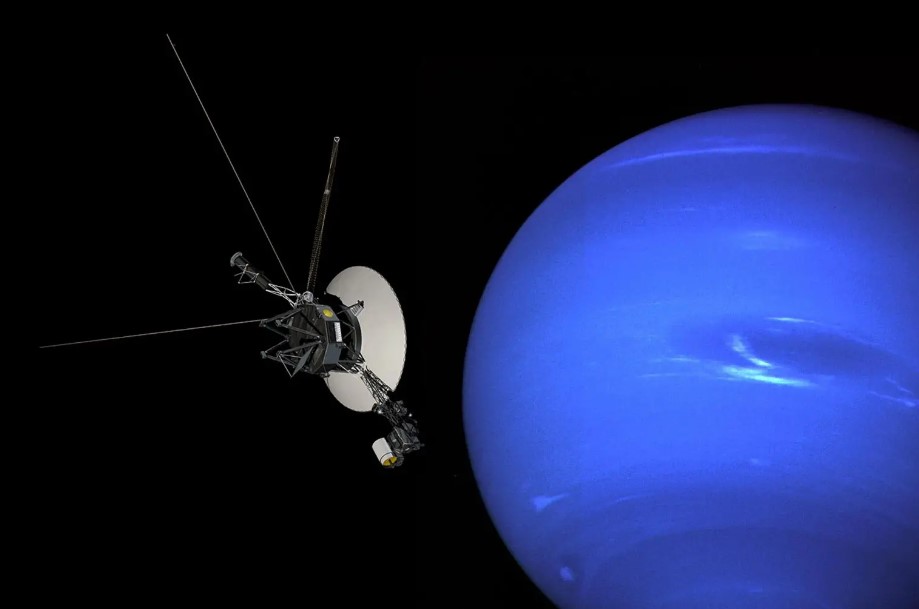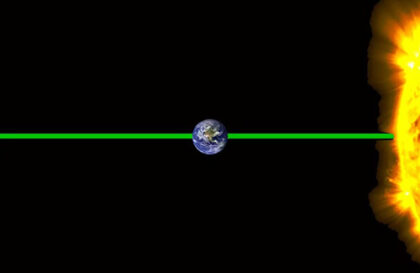Neptune, the most distant gas giant in the Solar System, has fourteen known moons. The first seven of them are called the inner satellites, which move in circular orbits in Neptune’s equatorial plane. The remaining seven moons are irregular, commonly called outer moons, and have inclined, eccentric, and often retrograde orbits.
Neptune’s moons are named after mythological Greek water deities, with Triton being the largest and Nereid the second largest. The names of the moons are Naiad, Thalassa, Despina, Galatea, Larissa, Hippocampus, Proteus, Triton, Nereid, Halimedes, Sao, Laomedeia, Psamathea, and Nesos, although S/2004 N1 has not yet received an official name. The Voyager 2 spacecraft added six previously unknown moons to the Neptune system. In comparison, five additional tiny moons were discovered by ground-based observations in 2002-03, and a 14th moon was found by the Hubble Space Telescope in 2013. All the moons have names related to the god Neptune or the sea, with the irregular moons named after the daughters of Nereus and Doris, Neptune’s companions.
The inner moons of Neptune. Shown here is the location of Hippocamp, compared with those of Neptune’s rings and other inner moons. The relative sizes of the moons are accurate; however, the moons have been enlarged with respect to their orbits by a factor of 20, to highlight the small size of Hippocamp. The scale bar (lower right) is 6,200 miles. Credit: The Nature
Triton is the only large moon in the Outer Solar System that moves in the opposite direction, against the rotation of Neptune itself. This is a very unexpected movement, and scientists believe that Triton was once an asteroid captured by Neptune’s gravity.
Nimea and Galimeda. They have the brightest observatory characteristics among the satellites of the planets.
Neptune has rings that are made up of small ice particles. These rings are located almost in the polar plane, which makes them unique among planetary rings.
What are some recent discoveries related to Neptune’s moons?

Credit: NASA/JPL-Caltech
The Voyager 2 mission, launched in 1989, provided much information about Neptune’s moons. This includes data on Proteus and Larissa, which have irregular shapes and heavily cratered surfaces. Several craters were discovered on the Larissa satellite, including:
Valentina Crater: Named after the Roman goddess Valentina, this crater is about 5 km in diameter.
Several craters have been discovered on Proteus, but they are usually smaller and less visible:
Hypatia Crater: This crater has a diameter of about 150 meters.
Ixomedia Crater: Another small crater with a diameter of about 100 meters.
Psammate’s orbit is the largest of all moons in the Solar System, taking about 25 years to complete one revolution around Neptune, and 125 times farther from Neptune than our Moon is from Earth. On July 15, 2013, a 14th satellite was announced that was discovered by analyzing old images taken by the Hubble Space Telescope. In addition, data from Voyager 2 showed that Triton is a Neptune moon covered in ejecting volcanoes.
Banner image: LEFT: ILLUSTRATION BY MARK R. SHOWALTER, SETI INSTITUTE; RIGHT: IMAGE BY NASA, JPL
Image credit:
https://www.nationalgeographic.com
https://eu.usatoday.com
https://scitechdaily.com



